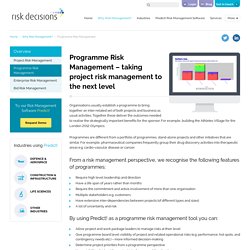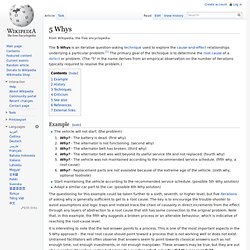

RBS. ERM. ERM Examples. About World Risk Day - World Risk Day. What is World Risk Day?

World Risk Day is a global forum for industry thought leaders and peers to gather together virtually to discuss the major trends, challenges and best practices in risk management. The second annual World Risk Day, themed “Shattering the Project Myth”, took place on May 14th, 2013. Who can participate in World Risk Day? World Risk Day is open to everyone who wants to learn how risk management is as important to project success as delivering on-time and on-budget. If you are involved in project or risk management within your organization, join the debate and share your ideas. Why is World Risk Day important? Launched in June of 2012, the first annual World Risk Day hosted 2,300 delegates and 25 expert speakers from a variety of industries, including energy, mining, major global infrastructure projects, and government organizations. With a focus on the huge numbers of capital projects the world over, World Risk Day 2013 proved to be bigger and better than ever.
Seven Crucial Steps to Effective Project Risk Management. Risk Management is simply defined as identifying, analyzing and managing the uncertainties in a project -both positive (opportunities) and negative (threats).

The benefits of risk management are instrumental to a project’s success. By proactively addressing uncertainties, in combination with a strong project management program, problems within the project can decrease by as much as 60 or 70 %. The International Organization for Standardization identifies the following principles of risk management. Risk management should: But what are the steps to building an effective risk management program? 1. 2. Identify not only the threats, but also any opportunities that may impact your project. Communication at this stage is crucial. 3. Risk Doctor - Risk Management. NSW Finance & Services - Project Risk Guide.
Managing Risks in Projects. Beca - Techniques for Managing Project Risk. Naomi Klein: Addicted to risk. Programme Risk Management - Risk Decisions. Organisations usually establish a programme to bring together an inter-related set of both projects and business as usual activities.

Together these deliver the outcomes needed to realise the strategically important benefits for the sponsor. For example, building the Athletes Village for the London 2012 Olympics. Programmes are different from a portfolio of programmes, stand-alone projects and other initiatives that are similar. For example, pharmaceutical companies frequently group their drug discovery activities into therapeutic areas e.g. cardio-vascular disease or cancer. From a risk management perspective, we recognise the following features of programmes: Require high level leadership and directionHave a life span of years rather than monthsRequire the commitment and active involvement of more than one organisationMultiple stakeholders e.g. customersHave extensive inter-dependencies between projects (of different types and sizes)A lot of uncertainty and risk.
By using Predict! Basic Risk Identification Techniques. 5 Whys. The 5 Whys is an iterative question-asking technique used to explore the cause-and-effect relationships underlying a particular problem.[1] The primary goal of the technique is to determine the root cause of a defect or problem.

(The "5" in the name derives from an empirical observation on the number of iterations typically required to resolve the problem.) Example[edit] The vehicle will not start. (the problem)Why? - The battery is dead. The questioning for this example could be taken further to a sixth, seventh, or higher level, but five iterations of asking why is generally sufficient to get to a root cause. It is interesting to note that the last answer points to a process. A key phrase to keep in mind in any 5 Why exercise is "people do not fail, processes do". History[edit] The technique was originally developed by Sakichi Toyoda and was used within the Toyota Motor Corporation during the evolution of its manufacturing methodologies. Techniques[edit] Criticism[edit] See also[edit] AS/NZS ISO 31000:2009 Risk management - Principles and guidelines. HB 89-2012 Risk management - Guidelines on risk assessment techniques. A Risk Management Standard. PMI - Risk Management Guide.
The Practice Standard for Project Risk Management provides a benchmark for the project management profession that defines the aspects of Project Risk Management that are recognized as good practice on most projects most of the time.

The Practice Standard for Project Risk Management covers risk management as it is applied to single projects only. It does not cover risk in programs or portfolios. This practice standard is consistent with the PMBOK® Guide and is aligned with other PMI practice standards.